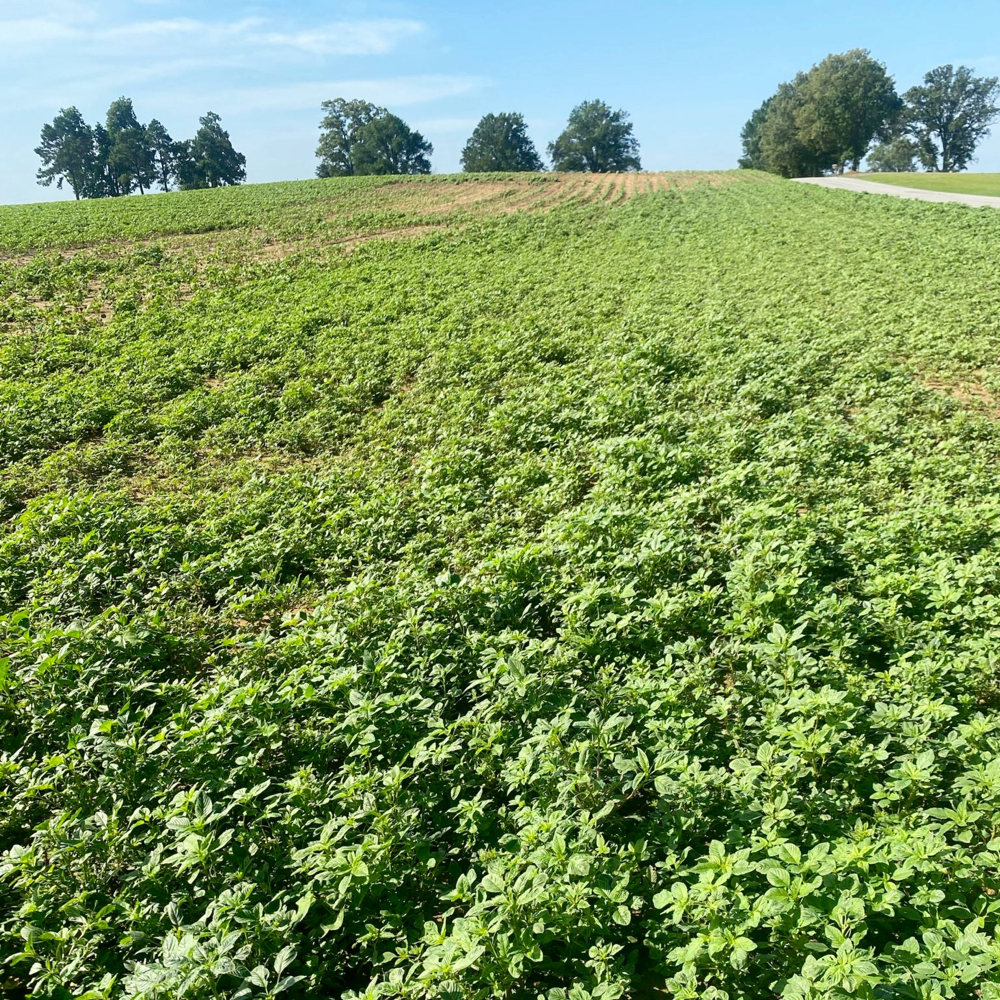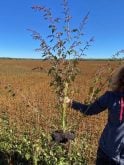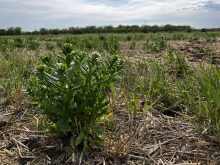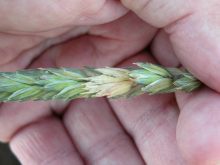The list of herbicide-resistant weeds continues to grow.
Dicamba-resistant Palmer amaranth weeds have been found in parts of Tennessee, University of Tennessee Extension weed specialist Larry Steckel wrote in a July blog.
“Results from some of the greenhouse experiments this winter and spring, as well as in-field research this growing season, would suggest that our state now has dicamba-resistant (DR) Palmer amaranth,” Steckel wrote.
Xtend soybeans, which tolerate glyphosate and dicamba, were first grown commercially in the United States in 2016. The new system was developed to help farmers deal with glyphosate-resistant weeds.
Read Also

Manitoba sclerotinia picture mixed for 2025
Variations in weather and crop development in this year’s Manitoba canola fields make blanket sclerotinia outlooks hard to pin down
Despite the troubling discovery, Steckel wrote farmers shouldn’t panic, but they should reassess their weed management.
“Herbicide stewardship is now more important than ever,” he wrote. “That is why we have stressed using hooded applications with herbicides such as paraquat, glufosinate, Valor, diuron, pyroxasulfone and MSMA in cotton. As we look forward to 2021 a pre-applied residual that is effective on Palmer is now a necessity. Moreover, timely applications of Liberty must be used shortly after a dicamba application to remove escapes. Finally, preliminary research would suggest that (dicamba-resistant) Palmer amaranth will also be more tolerant to 2,4-D. As such, this makes Liberty the most important herbicide in the weed management system in both Xtend and Enlist crops.”
Infestations range from a small pocket where a mother plant went to seed in 2019 to an area covering several acres, Steckel wrote.
Research conducted by the University of Tennessee and the University of Arkansas revealed some of the Palmer amaranth that escaped dicamba applications from several fields in 2019 in Tennessee were more than two times more tolerant to dicamba than Palmer amaranth grown from seed collected more than a decade ago in Arkansas and Tennessee. Subsequent greenhouse tests conducted at Texas Tech University showed that a population collected from Shelby County, Tenn., was more than 2.4 times more tolerant to dicamba than Palmer amaranth sourced from Lubbock, Texas.
In 2006 the first cases of glyphosate-resistant Palmer amaranth started showing up in Tennessee.
No Palmer amaranth has been found in Manitoba, though it is present in North Dakota.
Meanwhile, dicamba remains controversial in the U.S. because of damage caused to non-tolerant crops and natural areas.
On Aug. 5 three U.S. environmental groups issued a report recommending the Environmental Protection Agency not renew dicamba’s over-the-top product registrations unless and until independent research shows with certainty that dicamba will not cause off-target injury to crops and wild plants, including from vapour drift.
The report entitled Drifting Toward Disaster — How Dicamba Herbicides are Harming Cultivated and Wild Landscapes was produced by the National Wildlife Federation, the Prairie Rivers Network and the Xerces Society for Invertebrate Conservation.
“Dicamba herbicides pose significant threats to wild plants and the wildlife that depend upon them — even when used as prescribed on their labels,” Lekha Knuffman, agriculture program specialist at the National Wildlife Federation, said in a news release. “Widespread use of dicamba throughout the growing season is harming other crops as well as wild and native plants, degrading food sources for wildlife and pollinators. This is a crossroads in being able to limit the destructive effects of dicamba. The EPA must deny permission for the continued use of this damaging herbicide across millions of acres.”




















